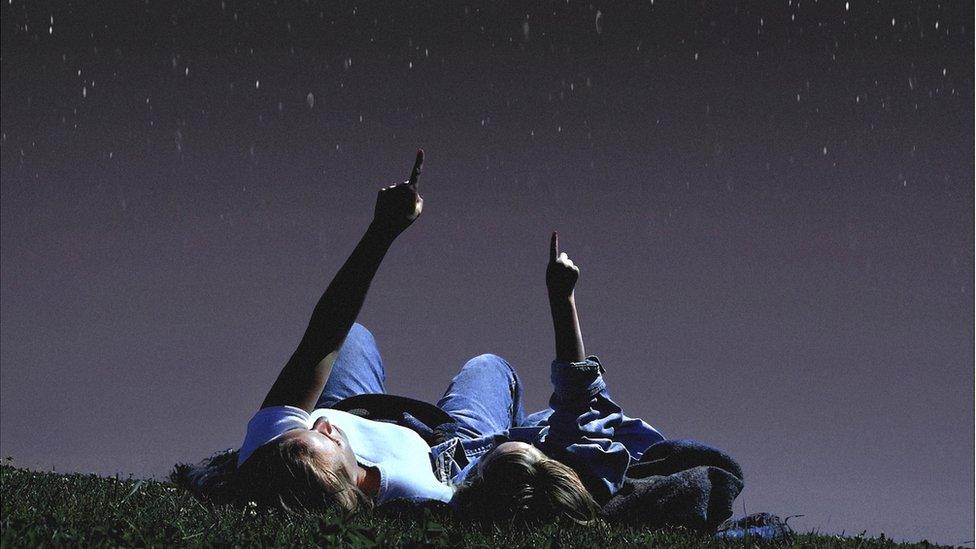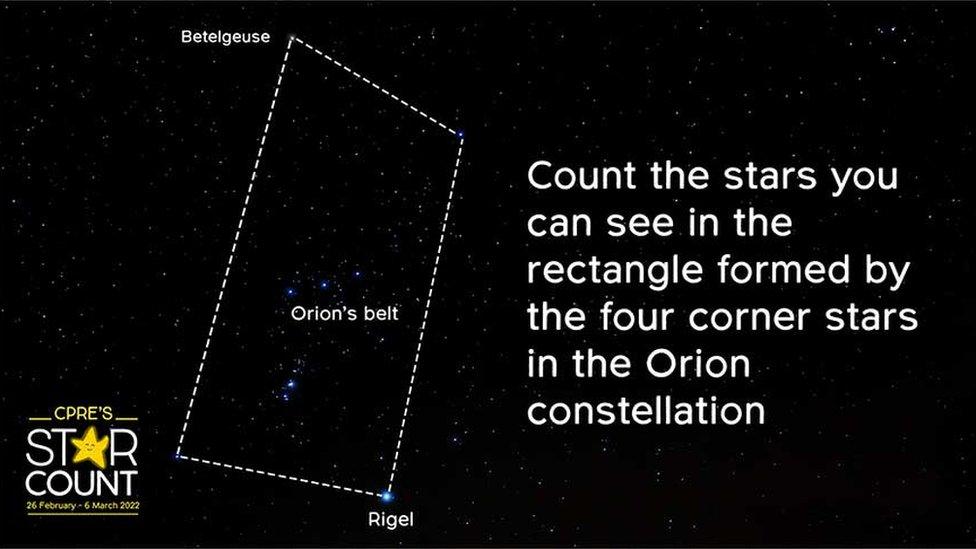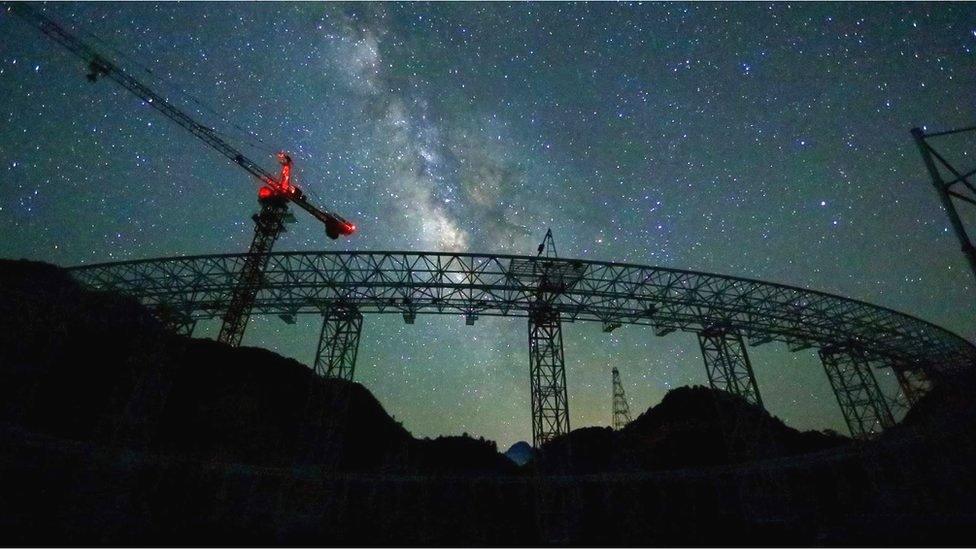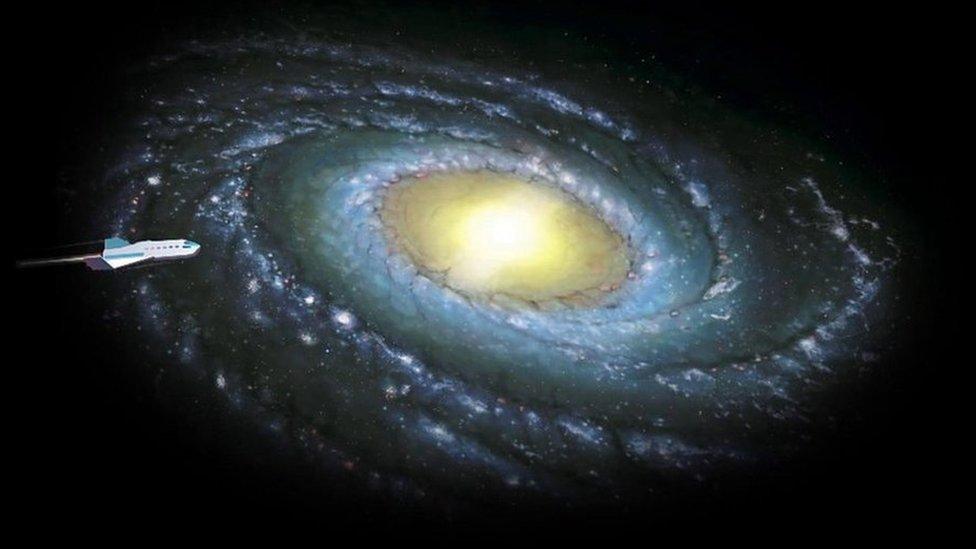Star Count 2022: Stargazing to measure dark skies has begun
- Published
- comments

Kids across the UK are being asked to count stars this week as part of a project to measure light pollution.
Countryside charity Campaign for Rural England (CPRE) is asking people to become "citizen scientists" and count the stars between 26 February and 6 March.
It's hoped the project will reveal where there are dark skies and in what spots the light pollution is the most serious.
With support from the British Astronomical Association, CPRE is asking people to pick a clear night to look up at the constellation Orion, without telescopes or binoculars, and get counting!
Light pollution is when there is too much, or poor use of, artificial light. It means many people only experience a limited view of the night sky.
Too much light at night, can affect our wellbeing, sleep and overall health. It can also cause problems for wildlife, changing the behaviour of nocturnal animals
How to take part in Star Count
CPRE has some top tips to make your star count sparkle.
1. Keep warm
It can get very cold out night so make sure that you are wrapped up with a coat or a blanket, with gloves and a hat. Maybe ask an adult to make you a hot drink to help keep you warm.
2. Pick a clear night
Try to pick a clear night for your count, with no haze or clouds, then wait until after 7pm so the sky is really dark.
WATCH: Top tips for stargazing from your garden
3. Let your eyes adjust to the darkness
Light can affect how many stars you see so try and turn off the lights in your house and wait until your eyes adjust to the darkness. The longer you wait the easier it will be to see stars, sometimes it can take as long as 20 minutes.
You'll need to make sure you're looking south to spot Orion, so if you need to use your phone to work out which way is south, do that first, then put your phone away. The glare from our phone screens makes star-spotting extra hard!
4. Count the stars in Orion

To take part in Star Count, find the Orion constellation
Once your eyes have adjusted look South to find Orion the hunter. Find the three stars that form the belt. Then find the bright orange star on the top left of Orion, then the blue-white one on the bottom right. Then look for the other two that form a rectangle around the constellation. Count all the stars you can see within the rectangle. Include Orion's belt, but not the four corner stars. You don't need a telescope or binoculars.
5. Submit your findings
After writing down the stars you see you can submit your findings to CPRE on their website.
How will the data be used?
Results from the Star Count will be used to make a map of where their are dark skies. By showing on a map where light pollution is most serious, CPRE says they will work with councils to reduce light pollution.
Beginner's guide to astronomy
It will also be compared to the results of the 2021 Star Count.
Last year around half of people taking part in Star Count could see 10 or fewer stars, while five per cent of people spotted thirty or more stars, indicating truly dark skies.
Studies have shown that light pollution not only affects people's sleep, but it can also be damaging to the environment, even confusing insects that pollinate crops.
- Published10 September 2020

- Published15 January 2022

- Published7 March 2018

